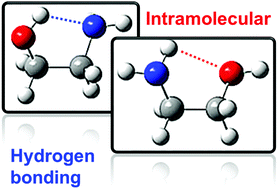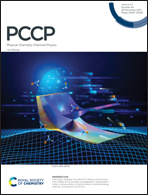Non-covalent interactions in molecular systems: thermodynamic evaluation of the hydrogen bond strength in aminoalcohols†
Abstract
In molecules with two functional groups that form hydrogen bonds, the structure–property relationship can depend significantly on the strength of intra-molecular hydrogen bonding. This bonding can cause a substantial conformational change that is accompanied by a frequency shift in the infrared spectrum, which provides the basis for experimental studies. Despite its great importance in biological systems, the available literature data for the strength of this bonding are scarce and not in agreement. In this work, we present the results of four thermodynamic methods for the determination of the strength of intramolecular hydrogen bonds. Comprehensive thermochemical analysis of 1-amino-2-alcohols and 2-amino-1-alcohols was performed with Fourier-transform infrared spectroscopy, high-level G4 quantum-chemical calculations, the homomorph scheme with enthalpies of vaporization and a group contribution method. With the combination of these four thermodynamic methods, the strength of intramolecular hydrogen bonding in 1,2-aminoalcohols and 2,1-aminoalcohols was evaluated quantitatively. The results were correlated with NBO parameters to find an explanation for the different strengths of intramolecular hydrogen bonds in total charge transfer and second order stabilization energies.



 Please wait while we load your content...
Please wait while we load your content...